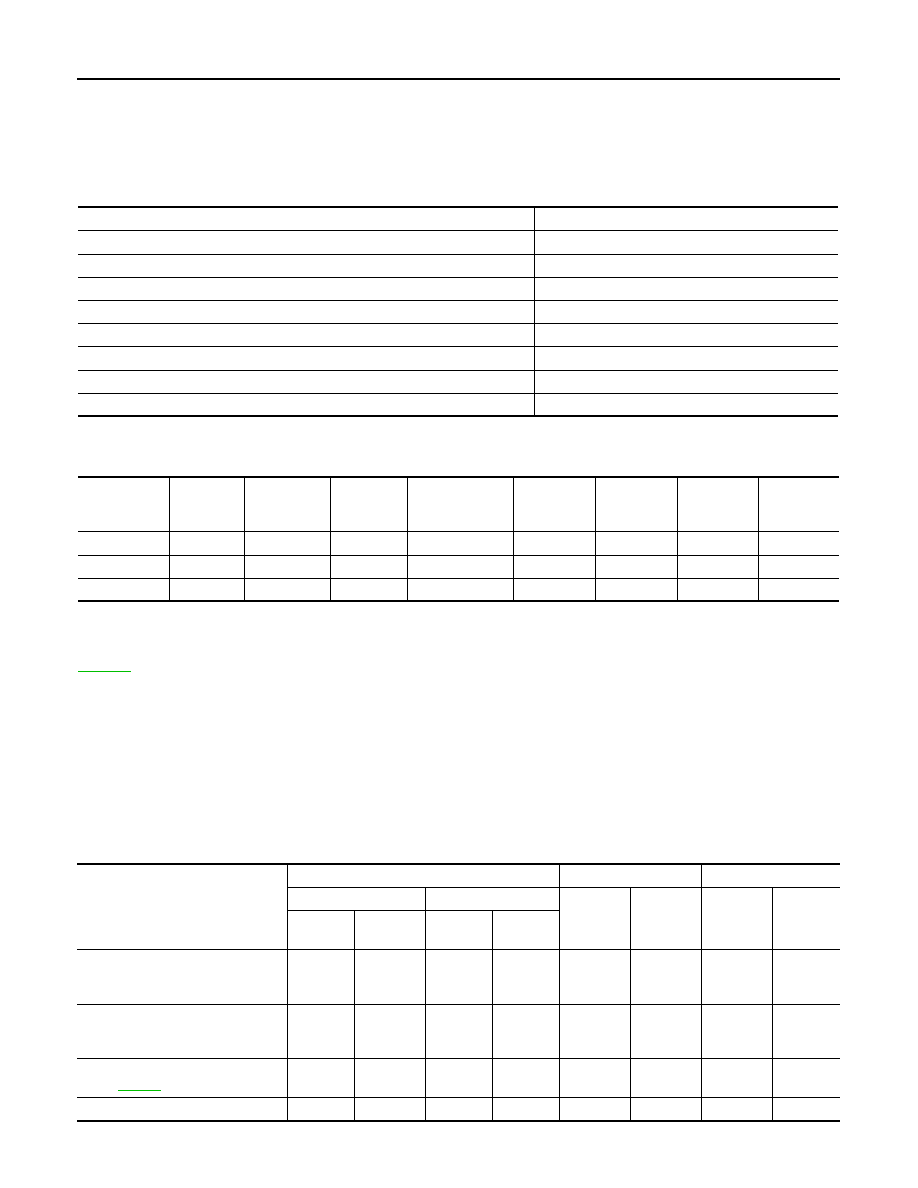Nissan Pathfinder (2010 year). Manual - part 245

EC-52
< FUNCTION DIAGNOSIS >
[VQ40DE]
ON BOARD DIAGNOSTIC (OBD) SYSTEM
ON BOARD DIAGNOSTIC (OBD) SYSTEM
Introduction
INFOID:0000000005257047
The ECM has an on board diagnostic system, which detects malfunctions related to engine sensors or actua-
tors. The ECM also records various emission-related diagnostic information including:
*: Service $0A is not applied for regions where it is not mandated.
The above information can be checked using procedures listed in the table below.
×
: Applicable —: Not applicable
*: When DTC and 1st trip DTC simultaneously appear on the display, they cannot be clearly distinguished from each other.
The malfunction indicator lamp (MIL) on the instrument panel illuminates when the same malfunction is
detected in two consecutive trips (Two trip detection logic), or when the ECM enters fail-safe mode. (Refer to
.)
Two Trip Detection Logic
INFOID:0000000005257048
When a malfunction is detected for the first time, 1st trip DTC and 1st trip Freeze Frame data are saved in the
ECM memory. The MIL will not illuminate at this stage. <1st trip>
If the same malfunction is detected again during the next drive, the DTC and Freeze Frame data are saved in
the ECM memory, and the MIL illuminates. The MIL illuminates at the same time the DTC is saved. <2nd trip>
The “trip” in the “Two Trip Detection Logic” means a driving mode in which self-diagnosis is performed during
vehicle operation. Specific on board diagnostic items will cause the ECM to illuminate or blink the MIL, and
save DTC and Freeze Frame data, even in the 1st trip, as shown below.
×
: Applicable —: Not applicable
Emission-related diagnostic information
SAE Mode
Diagnostic Trouble Code (DTC)
Service $03 of SAE J1979/ISO 15031-5
Freeze Frame data
Service $02 of SAE J1979/ISO 15031-5
System Readiness Test (SRT) code
Service $01 of SAE J1979/ISO 15031-5
1st Trip Diagnostic Trouble Code (1st Trip DTC)
Service $07 of SAE J1979/ISO 15031-5
1st Trip Freeze Frame data
—
Test values and Test limits
Service $06 of SAE J1979/ISO 15031-5
Calibration ID
Service $09 of SAE J1979/ISO 15031-5
Permanent Diagnostic Trouble Code (Permanent DTC)
Service $0A* of SAE J1979/ISO 15031-5
DTC
1st trip DTC
Freeze
Frame
data
1st trip Freeze
Frame data
SRT code
SRT status
Test value
Permanent
DTC status
CONSULT-III
×
×
×
×
×
×
—
×
GST
×
×
×
—
×
×
×
×
ECM
×
×
*
—
—
—
×
—
—
Items
MIL
DTC
1st trip DTC
1st trip
2nd trip
1st trip
displaying
2nd trip
displaying
1st trip
displaying
2nd trip
display-
ing
Blinking
Illuminat-
ed
Blinking
Illuminat-
ed
Misfire (Possible three way catalyst
damage) — DTC: P0300 - P0306 is
being detected
×
—
—
—
—
—
×
—
Misfire (Possible three way catalyst
damage) — DTC: P0300 - P0306 is
being detected
—
—
×
—
—
×
—
—
One trip detection diagnoses (Re-
fer to
.)
—
×
—
—
×
—
—
—
Except above
—
—
—
×
—
×
×
—
2010 Pathfinder